上一頁下一頁
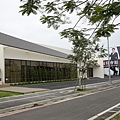
Ripples_Of_Desire_01

Ripples_Of_Desire_02
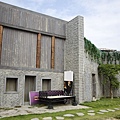
Ripples_Of_Desire_03

Ripples_Of_Desire_04

Ripples_Of_Desire_05
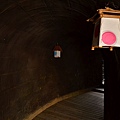
Ripples_Of_Desire_06
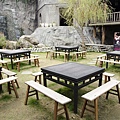
Ripples_Of_Desire_07

Ripples_Of_Desire_08

Ripples_Of_Desire_09

Ripples_Of_Desire_10

Ripples_Of_Desire_11
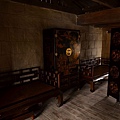
Ripples_Of_Desire_12

Ripples_Of_Desire_13

Ripples_Of_Desire_14

Ripples_Of_Desire_15

Ripples_Of_Desire_16

Ripples_Of_Desire_17

Ripples_Of_Desire_18

Ripples_Of_Desire_19
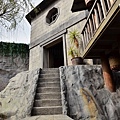
Ripples_Of_Desire_20
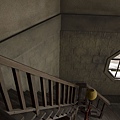
Ripples_Of_Desire_21

Ripples_Of_Desire_22
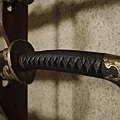
Ripples_Of_Desire_23

Ripples_Of_Desire_24

Ripples_Of_Desire_25

Ripples_Of_Desire_26

Ripples_Of_Desire_27

Ripples_Of_Desire_28

Ripples_Of_Desire_29

Ripples_Of_Desire_30

Ripples_Of_Desire_31

Ripples_Of_Desire_32

Ripples_Of_Desire_33

Ripples_Of_Desire_34
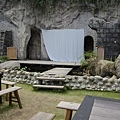
Ripples_Of_Desire_35
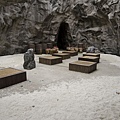
Ripples_Of_Desire_36
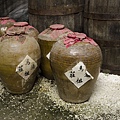
Ripples_Of_Desire_37
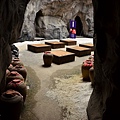
Ripples_Of_Desire_38

Ripples_Of_Desire_39

Ripples_Of_Desire_40
上一頁下一頁
相片最新留言
此相簿內的相片目前沒有留言
此相簿內的相片出現在:
相簿列表資訊
- 最新上傳:
- 2013/01/12
- 全站分類:
- 國內旅遊
- 本日人氣:
- 0
- 累積人氣:
- 25




他投靠纳粹,效忠希特勒,迫害爱因斯坦……
蝌蚪五线谱官方
08-02 10:06
普朗克和爱因斯坦是19世纪初最著名的的物理学家。虽然他们都荣获诺贝尔物理学奖,但他们的命运都不好,部分子女的结局也很悲惨。
鲜为人知的是,造成这一切的罪魁祸手,居然是一位为原子物理做出重要贡献并因此获得诺贝尔物理学奖的物理大咖。这位物理大咖不仅投靠纳粹政府,还效忠希特勒,迫害爱因斯坦……
善恶到头终有报,他的结局也令人无限唏嘘。
(一)
1904年夏,德国萨克森州汉诺威工业大学的物理实验室里,一个中年人正在做关于阳极射线的实验。
这个德国中年人叫约翰尼斯・斯塔克,他是阳极射线研究的专家,毕业于慕尼黑大学,在汉诺威工业大学当了几年教授。
他研究的是真空管里的阳极射线微粒是否遵循多普勒效应。
何为多普勒效应?多普勒是奥地利人,原名斯蒂安・多普勒,多普勒效应的意思是,波长会随着观测者的移动而改变。这里的波,既指声波,又指光波。
举个例子,一辆警车朝我们开来,警号(声波)随着距离的变近而越加尖锐,当它离开时警号越来越低沉。
“芯”“锂”“有”“光”
斷裂力學也沒想到的事,二維材料六方氮化硼抗裂性比石墨烯高 10 倍
June 3, 2021 by Emma stein Tagged: 六方氮化硼, 抗斷裂性, 斷裂力學, 石墨烯尖端科技, 材料
Telegram share !
六方氮化硼(hBN)是一種具有與石墨烯相似物理特性的二維材料,然而最近一組研究人員測試發現這種材料的抗裂性是石墨烯 10 倍,與斷裂力學基本描述背道而馳。在反覆實驗上千小時後,科學家找到問題了,裂紋分叉方式不同是導致六方氮化硼材料更具彈性的原因。
六方氮化硼(hexagonal boron nitride,hBN;別名 α-BN、g-BN)與石墨烯極為相似,這 2 種材料都是由原子構成六邊形蜂巢晶格的平面薄膜,因此前者有時也被稱作「白石墨」。只是就石墨烯而言,所有原子都是碳;而就六方氮化硼來說,每個六邊形晶格都包含 3 個硼原子和 3 個氮原子。
碳-碳鍵是自然界中最強的鍵之一,因此科學家預期石墨烯的強度和彈性都比六方氮化硼好,一般來說也沒錯:石墨烯極限拉伸強度約 130 GPa,彈性約 1.0 TPa;六方氮化硼強度約 100 GPa,彈性約 0.8 TPa,兩者數值接近,但六方氮化硼表現還是比石墨烯低了些。
▲ 在石墨烯和六方氮化硼材料中,原子排列在六邊形扁平晶格中,石墨烯所有原子都是碳,六方氮化硼則是 3 個氮原子和 3 個硼原子。
但在現實世界中,沒有任何材料毫無缺陷,科學家自 1920 年代以來,一直利用英國工程師 Alan Arnold Griffith 於二戰期間提出的斷裂力學(Fracture mechanics)來預測和定義材料的韌性(或抗裂紋擴展性),當施加在材料的應力大於將材料固定在一起的力時,裂紋就會擴大,且能量差異會在裂紋擴展中釋放。該理論在工程學中相當重要,它準確描述了材料在崩裂前可承受多少外力刺激。
7 年前,科學家依據該理論測量發現石墨烯的抗裂性偏低,若晶格上有裂縫,那麼只要一點負載就會破壞石墨烯材料;換句話說石墨烯也有非常脆弱的一面,只要有幾個原子「不健康」,石墨烯性能就會從非凡掉到平庸。
按照正常推理,六方氮化硼的抗裂性應該也與石墨烯相當,然而當研究人員去測試六方氮化硼時發現其抗裂性是石墨烯 10 倍,這表現太出乎意料,以至於無法用斷裂力學公式描述。
為解開這突兀謎題,研究團隊使用掃描電子顯微鏡(SEM)和穿透式電子顯微鏡(Transmission electron microscope,TEM)觀察六方氮化硼的裂紋如何產生,經過 1,000 多個小時的實驗與後續分析,他們終於發現問題,石墨烯與六方氮化硼再怎麼相似,終究存有細微差異。
▲ 二維材料六方氮化硼的抗裂韌性之所以那麼高,源自其原子結構(左)呈輕微不對稱,促使裂紋沿著分支路徑移動(右)。
在石墨烯中,裂紋傾向由上到下直線穿過對稱的六邊形結構,就像拉鍊一樣;但在六方氮化硼中,由於硼和氮之間的應力對比,導致六方氮化硼原子晶格結構略有不對稱,進一步促使裂縫有分叉和轉向的趨勢,而這也是讓六方氮化硼更具彈性的原因——材料透過使裂紋更難傳遞來強化自身,論文和著者、南洋理工大學材料學家 Huajian Gao 形容,這就像滑雪者在向前移動時失去平衡一樣。
已知六方氮化硼因優異的耐熱性、化學穩定性與介電特性,在電子應用中具有良好前景,既可作為支撐用基底,也可做為電子元件間的絕緣層。新研究除了揭開了材料的一種內在增韌機制外,或也可成為電子紡織品、植入物等技術的新選擇。
新論文發表在《自然》(Nature)期刊。
This 2D Material Is Way Tougher Than Graphene, And Scientists Are Excited
Hexagonal boron nitride’s remarkable toughness unmasked
(圖片來源:萊斯大學)
只是「阿北」一開口,又調皮了。先是考游泳選手黃渼茜熱力學三大定律,還詢問射箭男團銀牌選手鄧宇成,獎金領一輩子是領多久,最後不忘交代選手,防疫隔離期間少看電視,「因為電視都在講我壞話」。
Eternal Change for No Energy: A Time Crystal Finally Made Real
By
Natalie Wolchover
July 30, 2021
Like a perpetual motion machine, a time crystal forever cycles between states without consuming energy. Physicists claim to have built this new phase of matter inside a quantum computer.
25
Read Later
A time crystal flips back and forth between two states without burning energy.
Maylee for Quanta Magazine
In a preprint posted online Thursday night, researchers at Google in collaboration with physicists at Stanford, Princeton and other universities say that they have used Google’s quantum computer to demonstrate a genuine “time crystal.” In addition, a separate research group claimed earlier this month to have created a time crystal in a diamond.
A novel phase of matter that physicists have strived to realize for many years, a time crystal is an object whose parts move in a regular, repeating cycle, sustaining this constant change without burning any energy.
“The consequence is amazing: You evade the second law of thermodynamics,” said Roderich Moessner, director of the Max Planck Institute for the Physics of Complex Systems in Dresden, Germany, and a co-author on the Google paper. That’s the law that says disorder always increases.
Time crystals are also the first objects to spontaneously break “time-translation symmetry,” the usual rule that a stable object will remain the same throughout time. A time crystal is both stable and ever-changing, with special moments that come at periodic intervals in time.
The time crystal is a new category of phases of matter, expanding the definition of what a phase is. All other known phases, like water or ice, are in thermal equilibrium: Their constituent atoms have settled into the state with the lowest energy permitted by the ambient temperature, and their properties don’t change with time. The time crystal is the first “out-of-equilibrium” phase: It has order and perfect stability despite being in an excited and evolving state.
“This is just this completely new and exciting space that we’re working in now,” said Vedika Khemani, a condensed matter physicist now at Stanford who co-discovered the novel phase while she was a graduate student and co-authored the new paper with the Google team.
Khemani, Moessner, Shivaji Sondhi of Princeton and Achilleas Lazarides of Loughborough University in the United Kingdom discovered the possibility of the phase and described its key properties in 2015; a rival group of physicists led by Chetan Nayak of Microsoft Station Q and the University of California, Santa Barbara identified it as a time crystal soon after.
Researchers have raced to create a time crystal over the past five years, but previous demos, though successful on their own terms, have failed to satisfy all the criteria needed to establish the time crystal’s existence. “There are good reasons to think that none of those experiments completely succeeded, and a quantum computer like [Google’s] would be particularly well placed to do much better than those earlier experiments,” said John Chalker, a condensed matter physicist at the University of Oxford who wasn’t involved in the new work.
The cryostat used to hold Google’s quantum processors.
Google
Google’s quantum computing team made headlines in 2019 when they performed the first-ever computation that ordinary computers weren’t thought to be able to do in a practical amount of time. Yet that task was contrived to show a speedup and was of no inherent interest. The new time crystal demo marks one of the first times a quantum computer has found gainful employment.
“It’s a fantastic use of [Google’s] processor,” Nayak said.
With yesterday’s preprint, which has been submitted for publication, and other recent results, researchers have fulfilled the original hope for quantum computers. In his 1982 paper proposing the devices, the physicist Richard Feynman argued that they could be used to simulate the particles of any imaginable quantum system.
A time crystal exemplifies that vision. It’s a quantum object that nature itself probably never creates, given its complex combination of delicate ingredients. Imaginations conjured the recipe, stirred by nature’s most baffling laws.
An Impossible Idea, Resurrected
The original notion of a time crystal had a fatal flaw.
The Nobel Prize-winning physicist Frank Wilczek conceived the idea in 2012, while teaching a class about ordinary (spatial) crystals. “If you think about crystals in space, it’s very natural also to think about the classification of crystalline behavior in time,” he told this magazine not long after.
Consider a diamond, a crystalline phase of a clump of carbon atoms. The clump is governed by the same equations everywhere in space, yet it takes a form that has periodic spatial variations, with atoms positioned at lattice points. Physicists say that it “spontaneously breaks space-translation symmetry.” Only minimum-energy equilibrium states spontaneously break spatial symmetries in this way.
Wilczek envisioned a multi-part object in equilibrium, much like a diamond. But this object breaks time-translation symmetry: It undergoes periodic motion, returning to its initial configuration at regular intervals.
Something that’s as stable as this is unusual, and special things become useful.
Roderich Moessner
Wilczek’s proposed time crystal was profoundly different from, say, a wall clock — an object that also undergoes periodic motion. Clock hands burn energy and stop when the battery runs out. A Wilczekian time crystal requires no input and continues indefinitely, since the system is in its ultra-stable equilibrium state.
If it sounds implausible, it is: After much thrill and controversy, a 2014 proof showed that Wilczek’s prescription fails, like all other perpetual-motion machines conceived throughout history.
That year, researchers at Princeton were thinking about something else. Khemani and her doctoral adviser, Sondhi, were studying many-body localization, an extension of Anderson localization, the Nobel Prize-winning 1958 discovery that an electron can get stuck in place, as if in a crevice in a rugged landscape.
An electron is best pictured as a wave, whose height in different places gives the probability of detecting the particle there. The wave naturally spreads out over time. But Philip Anderson discovered that randomness — such as the presence of random defects in a crystal lattice — can cause the electron’s wave to break up, destructively interfere with itself, and cancel out everywhere except in a small region. The particle localizes.
People thought for decades that interactions between multiple particles would destroy the interference effect. But in 2005, three physicists at Princeton and Columbia universities showed that a one-dimensional chain of quantum particles can experience many-body localization; that is, they all get stuck in a fixed state. This phenomenon would become the first ingredient of the time crystal.
Imagine a row of particles, each with a magnetic orientation (or “spin”) that points up, down, or some probability of both directions. Imagine that the first four spins initially point up, down, down and up. The spins will quantum mechanically fluctuate and quickly align, if they can. But random interference between them can cause the row of particles to get stuck in their particular configuration, unable to rearrange or settle into thermal equilibrium. They’ll point up, down, down and up indefinitely.
Sondhi and a collaborator had discovered that many-body localized systems can exhibit a special kind of order, which would become the second key ingredient of a time crystal: If you flip all the spins in the system (yielding down, up, up and down in our example), you get another stable, many-body localized state.
Samuel Velasco/Quanta Magazine
In the fall of 2014, Khemani joined Sondhi on sabbatical at the Max Planck Institute in Dresden. There, Moessner and Lazarides specialized in so-called Floquet systems: periodically driven systems, such as a crystal that’s being stimulated with a laser of a certain frequency. The laser’s intensity, and thus the strength of its effect on the system, periodically varies.
Moessner, Lazarides, Sondhi and Khemani studied what happens when a many-body localized system is periodically driven in this way. They found in calculations and simulations that when you tickle a localized chain of spins with a laser in a particular way, they’ll flip back and forth, moving between two different many-body localized states in a repeating cycle forever without absorbing any net energy from the laser.
They called their discovery a pi spin-glass phase (where the angle pi signifies a 180-degree flip). The group reported the concept of this new phase of matter — the first many-body, out-of-equilibrium phase ever identified — in a 2015 preprint, but the words “time crystal” didn’t appear anywhere in it. The authors added the term in an updated version, published in Physical Review Letters in June 2016, thanking a reviewer in the acknowledgments for making the connection between their pi spin-glass phase and time crystals.
Something else happened between the preprint’s appearance and its publication: Nayak, who is a former graduate student of Wilczek’s, and collaborators Dominic Else and Bela Bauer put out a preprint in March 2016 proposing the existence of objects called Floquet time crystals. They pointed to Khemani and company’s pi spin-glass phase as an example.
A Floquet time crystal exhibits the kind of behavior envisioned by Wilczek, but only while being periodically driven by an external energy source. This kind of time crystal circumvents the failure of Wilczek’s original idea by never professing to be in thermal equilibrium. Because it’s a many-body localized system, its spins or other parts are unable to settle into equilibrium; they’re stuck where they are. But the system doesn’t heat up either, despite being pumped by a laser or other driver. Instead, it cycles back and forth indefinitely between localized states.
Vedika Khemani, a condensed-matter physicist at Stanford University, conceived of the newly demonstrated time crystal phase with three coauthors when she was a graduate student in 2015.
Rod Searcey
Already, the laser will have broken the symmetry between all moments in time for the row of spins, imposing instead “discrete time-translation symmetry” — that is, identical conditions only after each periodic cycle of the laser. But then, through its back-and-forth flips, the row of spins further breaks the discrete time-translation symmetry imposed by the laser, since its own periodic cycles are multiples of the laser’s.
Khemani and co-authors had characterized this phase in detail, but Nayak’s group couched it in the language of time, symmetry and spontaneous symmetry-breaking — all fundamental concepts in physics. As well as offering sexier terminology, they provided new facets of understanding, and they slightly generalized the notion of a Floquet time crystal beyond the pi spin-glass phase (noting that a certain symmetry it has isn’t needed). Their paper was published in Physical Review Letters in August 2016, two months after Khemani and company published the theoretical discovery of the first example of the phase.
Both groups claim to have discovered the idea. Since then, the rival researchers and others have raced to create a time crystal in reality.
The Perfect Platform
Nayak’s crew teamed up with Chris Monroe at the University of Maryland, who uses electromagnetic fields to trap and control ions. Last month, the group reported in Science that they’d turned the trapped ions into an approximate, or “prethermal,” time crystal. Its cyclical variations (in this case, ions jumping between two states) are practically indistinguishable from those of a genuine time crystal. But unlike a diamond, this prethermal time crystal is not forever; if the experiment ran for long enough, the system would gradually equilibrate and the cyclical behavior would break down.
Khemani, Sondhi, Moessner and collaborators hitched their wagon elsewhere. In 2019, Google announced that its Sycamore quantum computer had completed a task in 200 seconds that would take a conventional computer 10,000 years. (Other researchers would later describe a way to greatly speed up the ordinary computer’s calculation.) In reading the announcement paper, Moessner said, he and his colleagues realized that “the Sycamore processor contains as its fundamental building blocks exactly the things we need to realize the Floquet time crystal.”
Serendipitously, Sycamore’s developers were also looking for something to do with their machine, which is too error-prone to run the cryptography and search algorithms designed for full-fledged quantum computers. When Khemani and colleagues reached out to Kostya Kechedzhi, a theorist at Google, he and his team quickly agreed to collaborate on the time crystal project. “My work, not only with discrete time crystals but other projects, is to try and use our processor as a scientific tool to study new physics or chemistry,” Kechedzhi said.
Quantum computers aren’t the next generation of supercomputers — they’re something else entirely. Before we can even begin to talk about their potential applications, we need to understand the fundamental physics that drives the theory of quantum computing.
Video: Quantum computers aren’t the next generation of supercomputers — they’re something else entirely. Before we can even begin to talk about their potential applications, we need to understand the fundamental physics that drives the theory of quantum computing.
Emily Buder/Quanta Magazine;
Chris FitzGerald and DVDP for Quanta Magazine
Quantum computers consist of “qubits” — essentially controllable quantum particles, each of which can maintain two possible states, labeled 0 and 1, at the same time. When qubits interact, they can collectively juggle an exponential number of simultaneous possibilities, enabling computing advantages.
Google’s qubits consist of superconducting aluminum strips. Each has two possible energy states, which can be programmed to represent spins pointing up or down. For the demo, Kechedzhi and collaborators used a chip with 20 qubits to serve as the time crystal.
Perhaps the main advantage of the machine over its competitors is its ability to tune the strengths of interactions between its qubits. This tunability is key to why the system could become a time crystal: The programmers could randomize the qubits’ interaction strengths, and this randomness created destructive interference between them that allowed the row of spins to achieve many-body localization. The qubits could lock into a set pattern of orientations rather than aligning.
The researchers gave the spins arbitrary initial configurations, such as: up, down, down, up, and so on. Pumping the system with microwaves flipped up-pointing spins to down and vice versa. By running tens of thousands of demos for each initial configuration and measuring the states of the qubits after different amounts of time in each run, the researchers could observe that the system of spins was flipping back and forth between two many-body localized states.
The hallmark of a phase is extreme stability. Ice stays as ice even if the temperature fluctuates. Indeed, the researchers found that microwave pulses only had to flip spins somewhere in the ballpark of 180 degrees, but not exactly that much, for the spins to return to their exact initial orientation after two pulses, like little boats righting themselves. Furthermore, the spins never absorbed or dissipated net energy from the microwave laser, leaving the disorder of the system unchanged.
On July 5, a team based at the Delft University of Technology in the Netherlands reported that they built a Floquet time crystal not in a quantum processor, but out of the nuclear spins of carbon atoms in a diamond. The Delft system is smaller and more limited than the time crystal realized in Google’s quantum processor.
It’s unclear whether a Floquet time crystal might have practical use. But its stability seems promising to Moessner. “Something that’s as stable as this is unusual, and special things become useful,” he said.
Or the state might be merely conceptually useful. It’s the first and simplest example of an out-of-equilibrium phase, but the researchers suspect that more such phases are physically possible.
Related:
What Makes Quantum Computing So Hard to Explain?
Google and IBM Clash Over Milestone Quantum Computing Experiment
The Cartoon Picture of Magnets That Has Transformed Science
Nayak argues that time crystals illuminate something profound about the nature of time. Normally in physics, he said, “however much you try to treat [time] as being just another dimension, it is always kind of an outlier.” Einstein made the best attempt at unification, weaving 3D space together with time into a four-dimensional fabric: space-time. But even in his theory, unidirectional time is unique. With time crystals, Nayak said, “this is the first case that I know of where all of a sudden time is just one of the gang.”
Chalker argues, though, that time remains an outlier. Wilczek’s time crystal would have been a true unification of time and space, he said. Spatial crystals are in equilibrium, and relatedly, they break continuous space-translation symmetry. The discovery that, in the case of time, only discrete time-translation symmetry may be broken by time crystals puts a new angle on the distinction between time and space.
These discussions will continue, driven by the possibility of exploration on quantum computers. Condensed matter physicists used to concern themselves with the phases of the natural world. “The focus moved from studying what nature gives us,” Chalker said, to dreaming up exotic forms of matter that quantum mechanics allows.
【恭喜陳建仁教授成為教廷科學院新科院士!】👏👏👏
教廷新聞室7月30日公布,#教宗方濟各 任命我國流行病學家、前副總統 陳建仁 Chen Chien-Jen 教授為教廷宗座科學院院士。
公告中提到,陳建仁院士在國立台灣大學畢業後,取得美國約翰霍普金斯大學理學博士學位,過去曾擔任中華民國衛生署署長、行政院國家科學委員會主任委員、副總統等職務。
宗座科學院於1603年在羅馬成立,是世界上歷史最悠久的科學院之一,成立宗旨為推動數學、物理學,以及自然科學研究 。
科學院院士為終身職,目前有數學、物理、化學、生物學、環境科學等各科學領域專長共70餘名院士,其中許多院士為諾貝爾獎得主。
陳建仁院士是繼李遠哲博士後,該院第2位來自 #台灣 的院士。
#跟奧運一樣感動
#PontificalAcademyOfSciences
教廷公告連結:https://bit.ly/3BXh0OM
宗座科學院網站:https://bit.ly/3fd8NMv